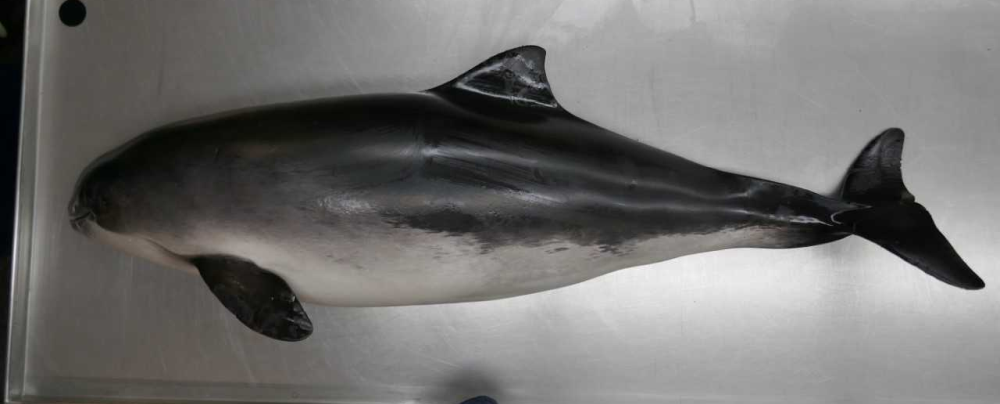
| Project data | |
|---|---|
| Project leader and chief scientist: | Prof. Prof. h. c. Dr. Ursula Siebert |
| Scientific staff: | Dr. Luca Schick, Dr. Stephanie Groß, TÄ Lotte Caecilie Striewe, TÄ Anastasia Kosachevskaya, TÄ Sara Grau-Camps |
| Project term: | June 2023 until May 2026 |
| Sponsorship: | Ministry for Energy Transition, Climate Protection, Environment and Nature |
Project description
Pressures on harbor porpoise habitat in the Schleswig-Holstein waters of the North Sea and Baltic Sea continue to increase due to anthropogenic activities. These include offshore wind turbine construction, Fehmarn Belt crossing, military and civilian blasting (munitions waste), fishing, as well as the use of PAL systems, tourism activities, chemical and pharmaceutical pollution, garbage, habitat loss, and other disturbances.
Studies of reproduction and age structure of harbor porpoises found dead in the waters of Schleswig-Holstein have shown that the animals generally die very young and that females in particular have little time to reproduce. The age structure of dead found animals provides evidence that many females die before or shortly after reaching sexual maturity. In addition, an increased number of pregnant females was found dead in the year 2021. Further data collection is needed to develop relationships that may contribute to reverse this trend. Initial studies on hearing and contaminant exposure in harbor porpoises have additionally shown that some of the animals are exposed to significant levels of persistent organic pollutants (POPs) and mercury, and hearing damage is evident in some animals. The relationships between hearing damage and exposure to contaminants as well as their significance at the population level, require further investigation. Systematic surveys of harbor porpoises are extremely important to assess trends in baseline biological data (age, sex, weight, location, date of discovery, species), as well as health status and causes of death. These data are elementary as they are reported to ASCOBANS, ICES, HELCOM, OSPAR and the IWC.
Within the framework of the project, freshly dead harbor porpoises from the Schleswig-Holstein North Sea and Baltic Sea will be examined in detail for their state of health. Histological, immunohistochemicaland microbiological examinations will be performed. The parasite fauna and its prevalence can give important information about its influence on the harbor porpoise, but also on the whole ecosystem in the Baltic Seaas intermediate hosts are important for transmission in different trophic levels. These additional investigations shall be used for the assessment parameters in the North Sea and Baltic Sea for the development of GES (Good Environmental Status) in the future and applied for OSPAR, HELCOM and the Marine Protection Framework Directive. In particular, if harbor porpoise mortalities become more frequent, immediate investigations are to be conducted to shed light on the possible causes and to uncover correlations. Based on the results, recommendations are to be developed regarding areas with increased potential for conflict and thus a further requirement for habitat investigations. Ears from well preserved animals found dead will also be collected and made available for further studies to examine the changes occuring in bycatch compared to animals found dead as well as to assess the effects of blasting, acoustic and chemical exposure. Similarly, post mortem examinations will be used to take collect samples for toxicological studies that can be analyzed as part of further projects.
Contact person
Stiftung Tierärztliche Hochschule Hannover
Institute for Terrestrial and Aquatic Wildlife Research
Werftstr. 6
25761 Büsum
Dr. Luca Schick
Phone: +49 (0)511-8568174
e-mail schreiben


